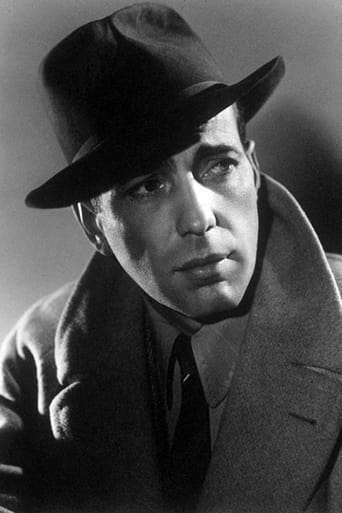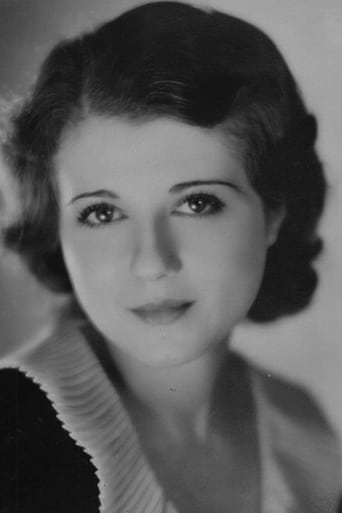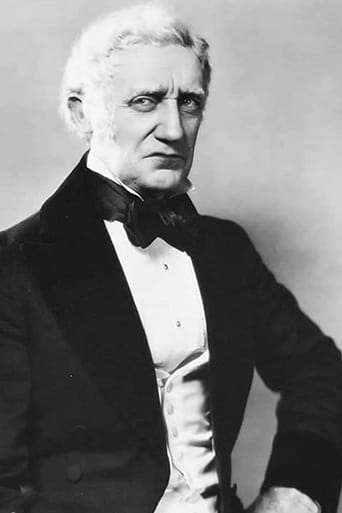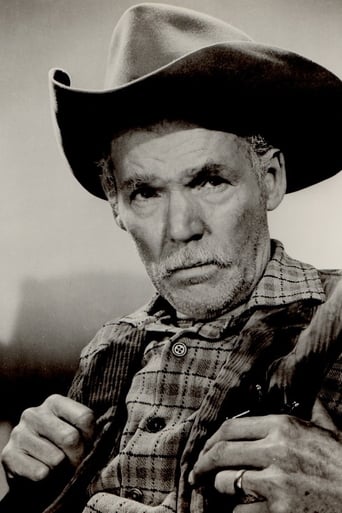Matrixston
Wow! Such a good movie.
SunnyHello
Nice effects though.
Intcatinfo
A Masterpiece!
Forumrxes
Yo, there's no way for me to review this film without saying, take your *insert ethnicity + "ass" here* to see this film,like now. You have to see it in order to know what you're really messing with.
sol1218
(There are Spoilers) " Call it Murder" is an overly sanctimonious film about how the justice system works only for the rich and well connected among us. As for those of us who're just barley making it in this cold cruel and unjust world tough luck and take whatever you can get, or not get, from the system if your to stand trail before it. This is what happens to housewife Ethel Saxton, Helen Flint, who was convicted for the murder of her philandering husband and is to be executed by the state at the stroke of "Midnight"; Which is the original title of the movie.As the minutes tick away until Ethel is strapped into the electric chair an unruly crowd assembles in front of the home of the jury foreman Edward Weldon, O.P Heggie, who was instrumental in convicting Ethel of first degree murder. Inside Weldon's house newsman Noland, Hery Hull, had got Weldon's sleazy son in-law Joe Bigger, Lynne Overman, to secretly help him install a radio broadcasting system to broadcast the reaction of Weldon and his family members as soon as the news of Ethel's execution is made public on the radio.Weldon's free spirited and ultra, or bleeding heart, liberal daughter Stella, Sidney Fox, always felt that Ethel Saxton was innocent in the murder of her husband since it was an crime of passion not premeditated murder. Stella is very much against what he father did in sending Ethel to the electric chair who's so strict in his views of law and order that he, in the way he talks, would even send a family member to death if in fact the law justifies it. By the time the movie ends Weldon would in fact get his chance to prove if his actions matches his words with his beloved daughter finding herself in the same situation that poor and condemned Ethel faces now with death just minutes away!***SPOILERS*** The film is about as convoluted as it can get in showing us how those like the well connected Edward Weldon can grease the wheels of justice to have things come out in his, or his family's, favor. With Weldon's daughter Stella openly admitting her responsibility for the murder of her hoodlum boyfriend Gan Boni, Humphrey Bogart, Weldon gets his good friend and city District Attorney Plunkett, Moffat Johnston, to make her change her mind with his usual shyster like double-talk and brain twisting psychological explanations that no one, not even Pluckett, could quite fully understand! This is the same Plunkett who's hair splitting and full of hot air shyster tactics, in reverse, sent the poor and knowing one one in high places, like Edward Weldon, Ethel Saxton straight to the Sing Sing electric chair!Even though future Hollywood superstar Humphrey Bogart was given top billing in the Video Tape release version of "Midnight", which was called "Call it Murder", his biggest contribution to the film was getting himself shot and killed off camera. Were in fact never shown who exactly rubbed Bogart, or Gar Boni, out but made to think that it was his girlfriend, whom he just dumped, Stella Weldon who did it. It's after Plunkett's long and confusing explanation of what were the circumstances that lead to Gar Boni's murder that you, as well as Stella and everyone else in the movie, aren't quite sure who did Gar Boni in! It may have even been the luckless Ethel Saxton who, despite being executed at the exact moment of Gar Boni's murder, somehow from beyond her grave, or the city morgue, got to him!
John Esche
MIDNIGHT (reissued by "Guaranteed Pictures" in 1947 as CALL IT MURDER with eighth billed Humphrey Bogart - now famous - elevated to top billing for his supporting role) was originally filmed at the Biograph Studios in Queens, New York, for Universal Pictures, based on a Theatre Guild production of the same name (but called IN THE MEANTIME during its tryout tour).While the stage production disappointed the critics and was not extended beyond its initial subscription run (48 perf., December 29, 1930 - Feb. 1931 at the Guild Theatre), Claire and Paul Sifton's examination of the flaws in the idea that "the law is the law" regardless of justice or tempering with mercy was interesting enough to justify Universal's committing a cast from the top of their second tier to turning out a decent "programmer" to fill the demand for films to keep the screens they controlled occupied between their major releases and training stars in the making (like Bogart and Sidney Fox).The original play concerned the foreman of a jury, a man named Edward Weldon (O.P. Heggie on screen), which had condemned a woman for the murder of a man who was leaving her - only to find, two acts later, his daughter (Fox) in a similar situation.Director Chester Erskine (at the start of a career which would see well remembered work on such "A" releases as THE EGG AND I, ALL MY SONS and ANDROCLES AND THE LION, working as director, writer and producer for another 40 years), while unable to produce the figurative "silk purse" out of a possible "sow's ear" of a melodrama, opened up the play, originally set only in the Weldon living room, with excellent - and given the period, surprisingly sophisticated - crosscutting between the condemned woman, the daughter's developing affair and the moral quandary around the Weldon himself.If the 30's structure of the argument may strike many as dated today, and the "deus ex machina" solution to one of Weldon's problems too pat to be genuinely satisfying, they probably are - but the elder Weldon's overly strict, unbending interpretation of his moral and civic obligations is hardly unknown today as an excuse for lack of thought or bigotry. A remake with more "modern" technique might indeed be well received, but the implicit melodrama would be just as blatant.While Humphrey Bogart's role is a relatively small one (although it is woven through most of the film), it makes for legitimately fascinating viewing as a transitional role for the handsome actor who had been playing stage juveniles. He had had 15 Broadway roles in the 12 years - and 9 films in the three years - before making this film, but would only have two more Broadway credits afterward (but 66 films). His Gar Boni in MIDNIGHT is very well done in a more modern style than many around him (see the similar effect the young Helen Hayes achieved with the same then "fresh" realistic style in 1932's FAREWELL TO ARMS) before finding the "world weary" persona that won career-making acclaim for his "Duke Mantee" opposite Leslie Howard on Broadway and screen just two years later.It may be of some interest that on stage, the supporting role of Arthur Weldon (played in the film by future director Richard Whorf) was created by actor/playwright Clifford Odets. Finding a good print of MIDNIGHT or even CALL IT MURDER may not be easy, but the search may be worth it. Don't expect a polished "modern" film, and shallow film buffs who don't appreciate history or context will probably hate it, but true film connoisseurs shouldn't miss this one for what IS there.
Ray Papa
I have recently watched this film again. This time I realized that there is a lot in the movie besides just seeing Bogart in one of his early films. This movie makes a very strong statement about capital punishment. Equally as strong is its statement on who you know if you want to beat a rap. The whole movie takes place during a few hours before the scheduled execution of a woman who killed her lover who was going to leave her. Except for the beginning court scenes, and prison scenes, and a couple of scenes where Bogart is in a room somewhere, and when he and Sidney Fox are in his car, the movie takes place at the home of the jury foreman who found the woman guilty. A news reporter gets into the house with a radio and a surprise at the end so that the public can witness what it's like for that foreman as the scheduled execution time approaches. What you may think is a surprise ending really isn't the end at all. Keep watching for the twist involving the district attorney who has his eye on the governorship. This film, like Bogart and Huston's Beat The Devil, is in the public domain.
lugonian
MIDNIGHT (Universal, 1934), directed by Chester Erskine, based on a stage play, is reproduced as such in this screen adaptation reportedly filmed and produced in New York City. Headed by Sidney Fox, in one of her final screen roles and last for Universal, she plays Stella, the daughter of Edward Weldon, a jury foreman (O.P. Heggie, the actor most famous today for his role as the blind hermit in THE BRIDE OF FRANKENSTEIN (1935)) at a trial where a woman, Ethel Saxon (Helen Flint) is accused of murdering a man who betrayed her. Because Weldon is solely responsible for the verdict that convicts Saxon to be later executed at midnight in the electric chair, his personal life changes dramatically. Weldon is not only hounded by reporters after the trial, particularly one named Nolan (Henry Hull, the future WEREWOLF OF London also in 1935) who manages to be a guest at his home on the night of Saxon's execution, but he must stand firm with his decision regardless. Stella, who had become acquainted with a man at the trial named Garboni (Humphrey Bogart), becomes interested in him, unaware that he is a gangster, but learns about him later on in the story when she notices that he carries a gun. When Garboni finds himself having to be forced to leave town, Stella wants to go away with him, but he refuses to let her do so, but agrees on meeting her one last time before he goes. On the very night of Ethel Saxon's execution, Stella and Garboni have a farewell meeting in his car. As the switch is being pulled on Saxon, a gun shoots off on Garboni. Returning home to her father with the gun in her hand, Stella admits to shooting Garboni, which puts the old man into a real predicament as to what to do. Should he stand by his own merits and have his own daughter arrested for the crime, or find a way to violate the law and shield her?Although the story premise is very interesting, especially the subject about a man who feels a murderer must pay the price, only to have his own daughter commit the same kind of crime of passion, MIDNIGHT fails to deliver mainly because of stiff, stagy production with not so convincing dialog. Under capable hands of a more suitable director, for instance, William Wyler, for example, MIDNIGHT might have worked as a tense and moving drama. Sidney Fox, who usually gives a satisfactory performance, seems to be the weakest link here, talking somewhat shaky at times for no reason. She's not very convincing, especially during her emotional scenes. Occasionally the camera shots moving at different angles keeps the pace moving, but not enough to hold one's interest at 73 minutes.Other capable members of the cast include Margaret Wycherly as Mrs. Weldon; future director Richard Wholf as Stella's brother, Arthur; Lynne Overman and Katherine Wilson as Joe and Ada Biggers, tenants of the Weldon household; Granville Bates, Cora Witherspoon, Henry O'Neill, and Moffatt Johnston as a district attorney who is called to the Weldon home to solve the mystery to Garboni's murder.To capitalize on the success of future film star Humphrey Bogart, MIDNIGHT was later reissued in 1946 as CALL IT MURDER with Bogey being given star billing, the very print available to video cassette and DVD. It's the former Blackhawk Video Company of Davenport, Iowa, that distributed the movie on videotape with it's original "Midnight" title, opening credits headed by SIdney Fox, O.P. Heggie and Henry Hill, with Bogart's name listed eighth in the cast, as initially presented in theaters in 1934.MIDNIGHT will never be listed in Hollywood's Top Ten Best list, but it's worth viewing for being an early screen appearance of future superstar Humphrey Bogart or a rediscovery of Sidney Fox, whose movie career (mostly at Universal) lasted only three years. Fox and Bogart had worked together earlier in THE BAD SISTER (1931), which not only became Fox's movie debut, but the future two-time Academy Award winning actress, Bette Davis. (***)





